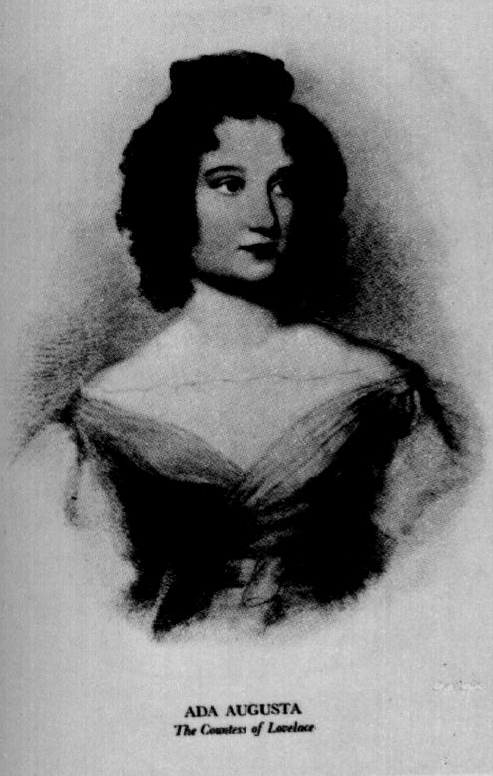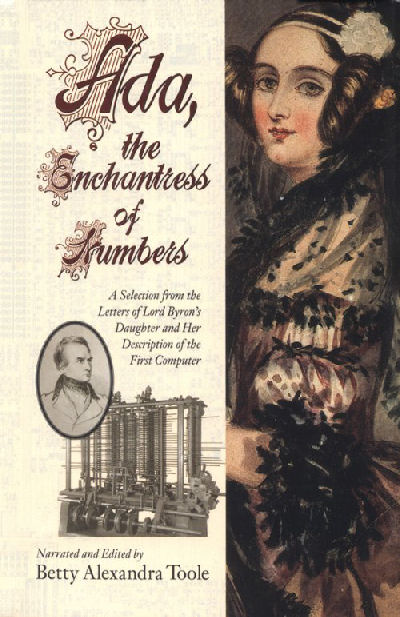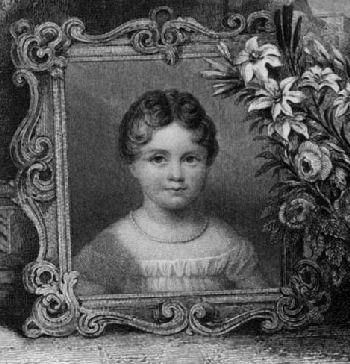The First Computer Programmer
1815 - 1852



Ada aged 3
Ada Byron Lovelace was one of the most charming personalities in computer history. She is known as a British mathematician, musician, and is best known as the first computer programmer. She wrote about Charles Babbage’s “Analytical Engine”, explaining the process with such clarity and precision that her work became the leading text explaining the process now known as computer programming. A software language that was developed in 1979 by the U.S. Department of Defense was named Ada in her honor.
Ada was born on December 10, 1815 to the famous poet, Lord Byron and Annabella Milbanke. Byron expected his baby to be a "glorious boy" and was disappointed when his wife gave birth to a girl. Augusta was named after Byron's half-sister, Augusta Leigh, and was called "Ada" by Byron himself.
Lord Byron was a strikingly handsome man who traveled widely and wrote his poetry with a biting criticism of British society. While he fell in love with Annabella, their marriage lasted only a year. Five weeks after Ada was born, Lady Bryon asked for a separation from her husband, and was given sole custody of the child. Lord Byron left for Italy and never returned to his home. He never saw his daughter again. He died of illness in 1824, when Ada was eight years old, at Missolonghi, Greece, where he had gone to fight for Greek independence from the Ottoman Empire. Ada was not shown the family portrait of her father (covered in green shroud) until her twentieth birthday
Ada was an active athletic child, loving gymnastics, dancing, and horseback riding. She became an accomplished musician, playing the piano, violin, and harp
As a teenager, Ada had all the advantages of the elite in London. She attended concerts, theaters, and elegant parties. She met many famous people, including the queen.
Even though she loved the arts, Ada was more interested in how things worked. She was fascinated by mechanical things and loved to figure out what make machines work.
Ada was often ill, beginning in early childhood. At the age of eight, she experienced headaches that obscured her vision. In June 1829, she was paralysed after a bout of measles . She was subjected to continuous bed rest for nearly a year, which may have extended her period of disability. By 1831, she was able to walk with crutches. Despite being ill Ada developed her mathematical and technological skills. At age 12 this future "Lady Fairy", as Charles Babbage affectionately called her, decided she wanted to fly. Ada went about the project methodically, thoughtfully, with imagination and passion. Her first step in February 1828, was to construct wings. She investigated different material and sizes. She considered various materials for the wings: paper, oilsilk, wires and feathers. She examined the anatomy of birds to determine the right proportion between the wings and the body. She decided to write a book which she called Flyology, illustrating, with plates, some of her findings. She decided what equipment she would need, for example, a compass, to "cut across the country by the most direct road", so that she could surmount mountains, rivers and valleys. Her final step was to integrate steam with the "art of flying".
In early 1833 Ada had an affair with a tutor and, after being caught, tried to elope with him. The tutor's relatives recognised her and contacted her mother. Annabella and her friends covered the incident up to prevent a public scandal.
When she was seventeen years old, Ada met Mrs. Somerville, a remarkable woman who had just published a book on mathematical astronomy, “The Mechanism of the Heavens”. This woman became a mentor to Ada and while she encouraged the young lady in her mathematical studies, she also tried to put mathematics and technology in a human context. It was Mrs. Somerville who arranged for Ada to meet Lord William King, Earl of Lovelace, who was to later become her husband.
When Ada was 19 she married William King. Several years later he became the Earl of Lovelace, so she gained the title the Countess of Lovelace. They had two sons and a daughter: Byron Noel (1836), Anne Isabella (1837) and Ralph Gordon (1839).
Ada met Charles Babbage at a dinner party put on by Mrs. Somerville. It was here that she first heard of Mr. Babbages Analytical Engine and Ada was intrigued by his ideas. As his idea progressed in later years, Ada suggested to Babbage that a plan be written for how the engine might calculate Bernoulli numbers. He commissioned Ada to write that plan, and this very plan is now considered the first “computer program”. She became an obsessive gambler in her later years, which caused her family much financial stress. Sadly, she developed cancer of the uterus and on November 27, 1852, she died at the young age of thirty-six, the same age that her famous poet father, Lord Byron, had died. The cancer was probably exacerbated due to bloodletting by her physicians. The illness lasted several months, in which time her mother, Annabella took command over whom Ada saw, and excluded all of her friends and confidants. Under her mother's influence, she had a religious transformation and was coaxed into repenting of her previous conduct and making Annabella her executor. She lost contact with her husband after she confessed something to him on 30 August which caused him to abandon her bedside. What she told him is unknown. She was buried, at her request, next to her father at the Church of St. Mary Magdalene in Hucknall, Nottinghamshire.
Unfortunately, Ada Byron's accomplishments were subsumed into those of Charles Babbage. It was not until 1952, when Lord Bowen published a text that cited her accomplishments, that the world would reacquaint itself with this wonderful visionary. Today, Ada Byron receives the recognition she deserves. The Department of Defense honored her by naming a 1979 programming language ADA.
The field of computer science, and the computer revolution, owes much to the interpretative insight that Ada Byron contributed in her notes to Babbage's Analytical Engine. Like all true visionaries, she overcame the limitations of her era, and the results of her work appear everywhere, from the Internet to the concert hall.